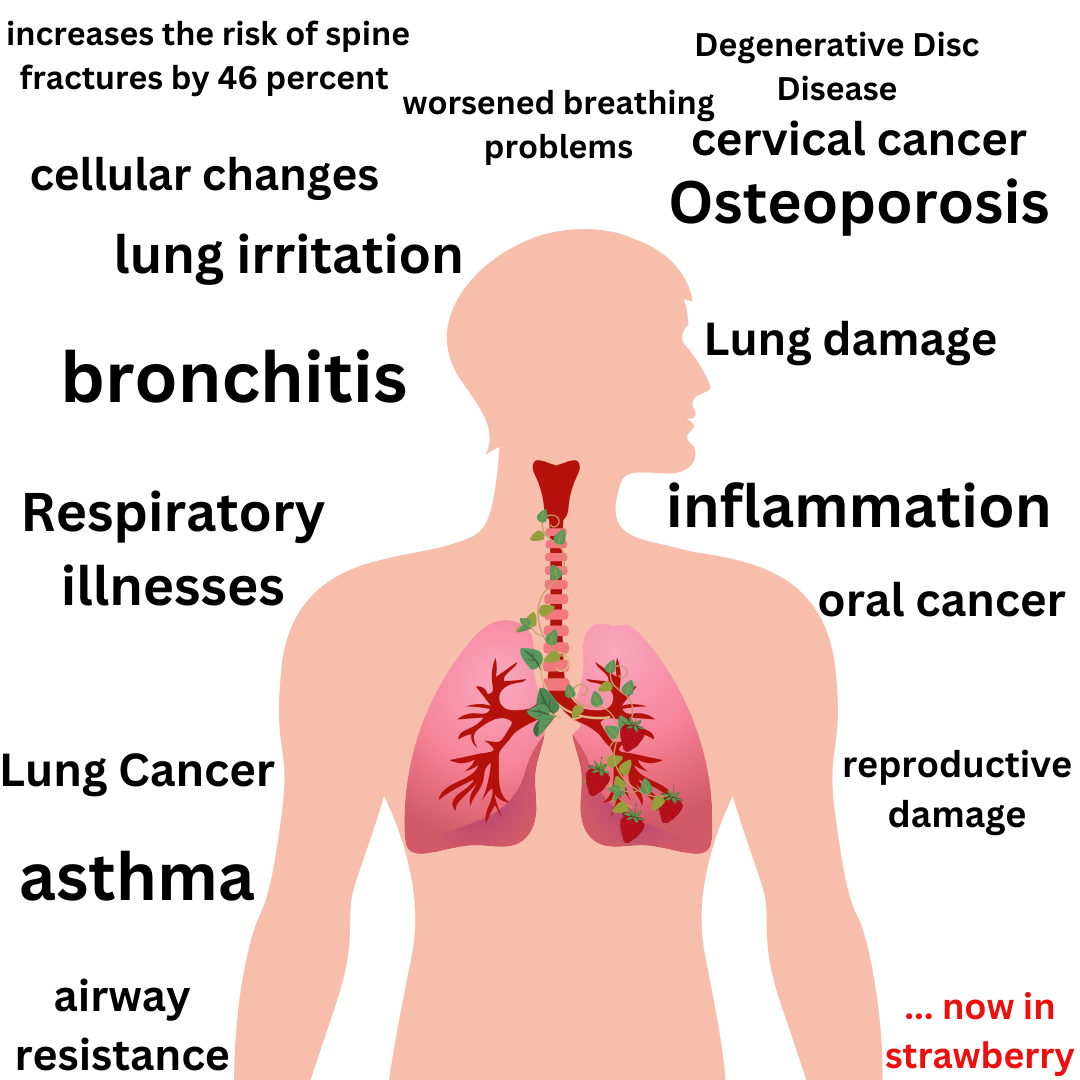In recent years, the alarming rise in teen vaping has become a cause for concern among health experts and parents alike. Vaping, often seen as a safer alternative to traditional smoking, has lured in many adolescents according to Idaho Public television.
Health care providers are warning that vaping damages the brains, bones, and lungs of developing bodies. The aerosols produced by e-cigarettes contain harmful substances, including nicotine, which can have profound effects on developing brains. Studies done by the National Institute of Health indicate that the adolescent brain is particularly vulnerable to the addictive nature of nicotine, potentially leading to long-term dependence.
Beyond addiction, vaping has been linked to various respiratory issues. The inhalation of flavored e-liquids and other chemicals can cause irritation and damage to the respiratory system, exacerbating pre-existing conditions such as asthma. Recent cases of severe lung injuries associated with vaping underscore the potential for serious health complications, dispelling the misconception that e-cigarettes are harmless. For example, By February 2020, the Central Disease Control and Prevention (CDC) had recorded over 2,800 hospitalizations along with 68 deaths caused by e- cigarettes.
Moreover, the enticing flavors of e-cigarettes play a role in attracting teens to vaping. These fruity or minty flavors, though appealing, often mask the true potency of the substances being inhaled. The lack of stringent regulations on the marketing and sale of flavored e-cigarettes only serves to heighten the risk of teen initiation and addiction.
“I think there is a lot of misinformation about vaping, that its healthier and it’s not,” said Natalie Runyon, mom and computer teacher at Omaha North.
The social implications of vaping among teens are also noteworthy. The normalization of vaping in peer groups can create a culture where the dangers are downplayed, leading to increased experimentation.
The presence of e-cigarettes in schools not only disrupts the learning environment but also exposes non-users to secondhand aerosol, posing potential risks to their health.
“Teen smoking and vaping has been a problem forever,” said Runyon.
Research from the CDC indicates that e-cigarettes may emit harmful substances, which means there could be health risks to the user and others through secondhand exposure. Some of the harmful substances emitted in secondhand e-cigarette aerosols are like those in secondhand tobacco smoke.
Secondhand smoke effects include but are not limited to coronary heart disease, stroke, and lung cancer, according to the CDC.
“Secondhand smoke is dangerous to people who don’t smoke. It’s my choice to not have to breathe it in,” said Runyon.
The Omaha North student hand book states, “To include students found to be in use of tobacco, vapor devices or any product that may be used to distribute tobacco in any form, including the use of vapor products, electronic nicotine delivery systems, or alternative nicotine products while in the school building, on school grounds or at school activities is a level two offense.” According to the handbook, a level two offense may result in involvement
by support staff, both school-based and within the community, and/or the administrator.
The rising trend of teen vaping has been proven to be a serious threat to public health. The addictive nature of nicotine, coupled with the harmful substances found in e-cigarettes, can have lasting consequences on the physical and mental well-being of adolescents.



